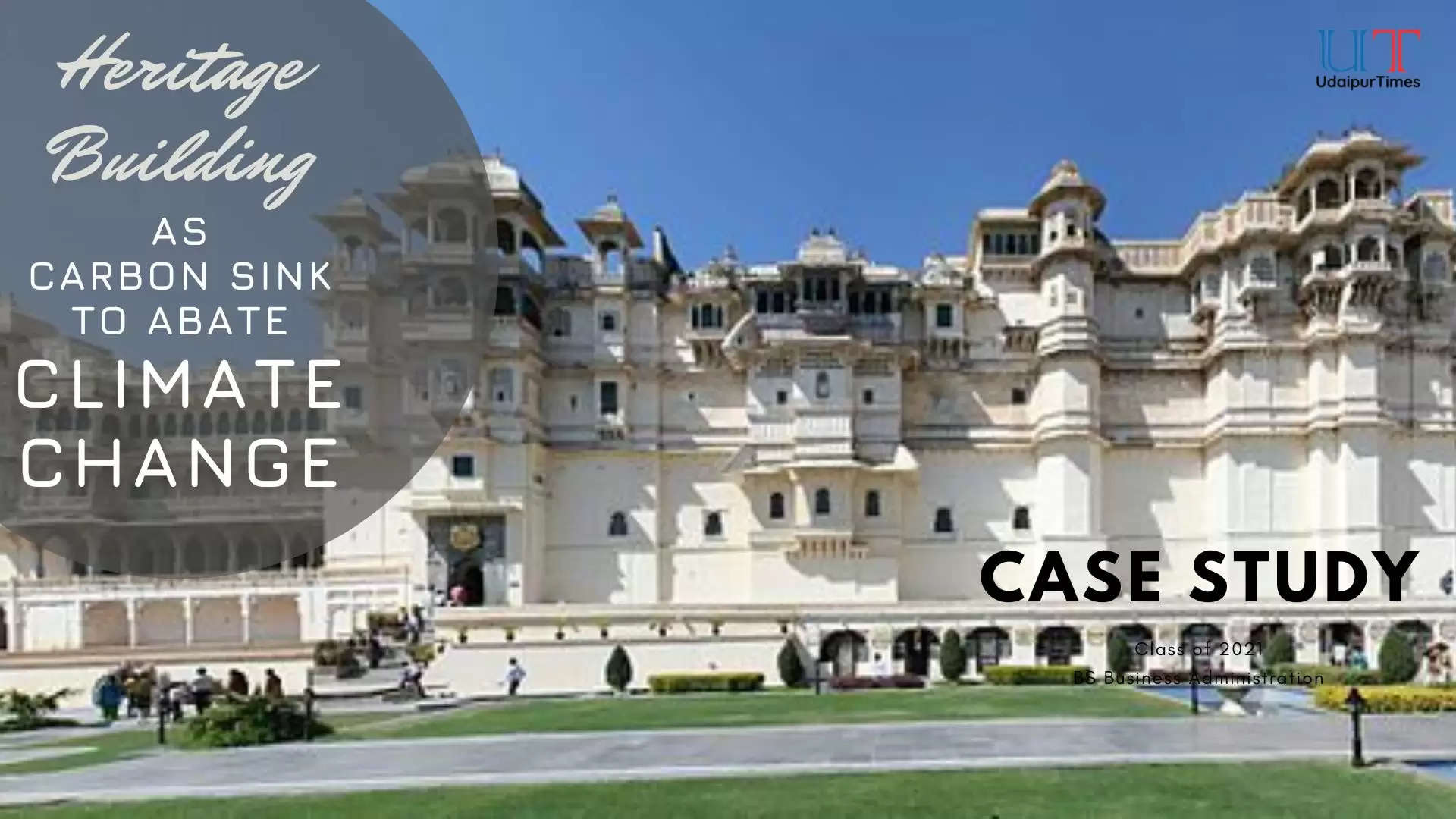Case Study on Udaipur Palace - Heritage building as a Carbon Sink to abate Climate Change
A study on the structure and material of Udaipur's City Palace paves a novel approach to rethink the use of lime in modern construction for green and sustainable construction at an economical cost. The research concludes that proper use of lime can help us both preserve our legacy from the past and develop more environmentally friendly buildings in the future.
Genesis of the Study
The repercussions of global climate change are already being witnessed in nature. The glaciers have shrunk and the the effect is felt across seasons globally. In India, temperatures have risen, growing seasons have stretched, precipitation patterns have shifted and extreme precipitation events have increased in prevalence and magnitude. The direct consequence includes the beginning of the spring thaw and the arrival of the first frost can both be delayed until considerably later in the fall by a slight change in temperature. A lot of trees and spring flowers are seen blooming earlier than usual due to the climate shifts we are experiencing.
Thus, spring arrives sooner, summers are more extensive, fall arrives later and winters are brief. The key contributor to global warming is direct and indirect carbon emissions from industry, transportation and construction sectors. According to the reports, the level of Carbon Dioxide in the entire planet’s atmosphere has soared by 43.5 ppm since 2000. This is an increase of 12%, and by 2020, it has hit a new record of 412.5 ppm. Manmade emissions from cement manufacture and usage are key contributors to the long-term increase in atmospheric carbon dioxide concentration, accounting for an average increase of 2.1 ppm/year over the last decade. As public awareness of climate change and greenhouse gas emissions has augmented, researchers have looked into a myriad of carbon capture and storage options. An ancient, easy and affordable mitigation perspective that has been less explored is the performance of lime-built structures that symbolise any country’s cultural heritage.
Team, findings, perspective and conclusions
A scientific restoration study was led by Dr Thirumalini Selvaraj, Associate Professor, School of Civil Engineering at VIT University, Vellore and her research team ‒ Shoaib Wani (Research Scholar) and Ashna Mehra (B.Tech) on carbon capture performance of 15th-century lime mortars used in City Palace Udaipur, Rajasthan, currently in possession of Maharana of Mewar Charitable Foundation.

The City Palace structure is constructed using local stone and marble with lime mortar and limecrete and the samples were collected from different locations and studied for carbon sequestration. The phenomenon of atmospheric carbon dioxide capture by the fresh lime forms a stable and naturally found carbonate of calcium throughout its lifetime, acting as a carbon sink. However, the main objective of the research team was to find the original materials used in the structures.
It was understood through investigation that the lime used is most suitable for carbon capture and permanent storage through biomineralization, boosting the formation of stable and naturally found calcium carbonate. The material was designed as climate response material with the proper lime to sand proportion. The addition of carbohydrate-rich plant extracts added during the preparation of mortars at the time of construction enhances the carbon capture while at the same time not compromising on strength, longevity and durability aspects.
While comparing lime with cement construction, the cement absorbs 7.5% to 19% of atmospheric carbon dioxide over the structure’s lifetime and different researches all over the world have presented quite inconsistent results. In contrast, the thermal studies on the palace mortars depict the amount of carbon dioxide absorbed by the collected samples lying in the range of 14-24% by the weight of samples from the surroundings. The research leads to rethink that there is no need to use cement at every point in modern construction. The lime can be used or replaced in non-structural elements, bedding mortars and plastering works in modern buildings and this may reduce the use of cement, which is the need of the hour to mitigate climate change.
Once again, the built heritage in India proved to be eco-friendly with better performance, longevity and overall satisfy the universal postulates of good architecture with three attributes: firmitas, utilitas, and venustas (“strength”, “utility”, and “beauty”). This study paves a novel approach to rethink the use of lime in modern construction for green and sustainable construction at an economical cost. In conclusion, the proper use of lime can help us both preserve our legacy from the past and develop more environmentally friendly buildings in the future.
To join us on Facebook Click Here and Subscribe to UdaipurTimes Broadcast channels on GoogleNews | Telegram | Signal



